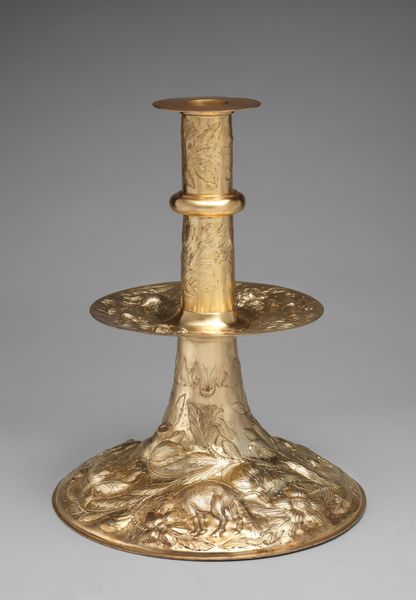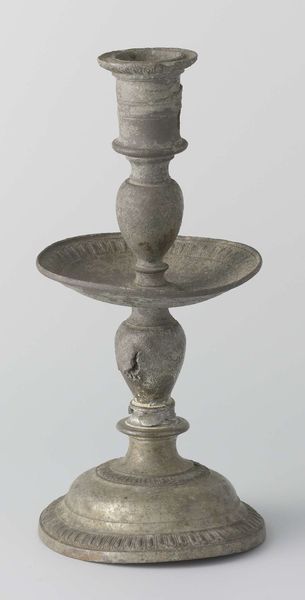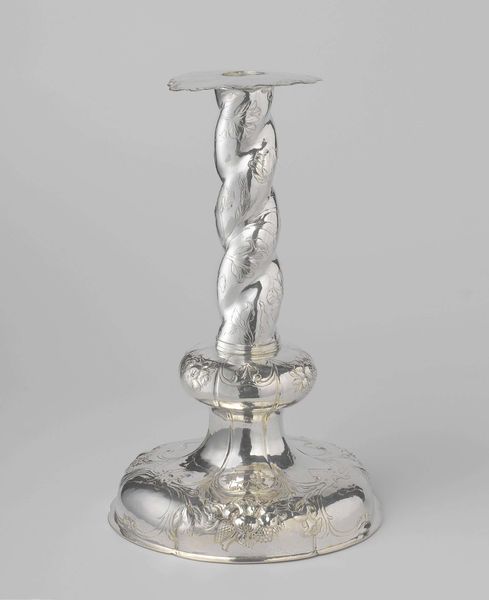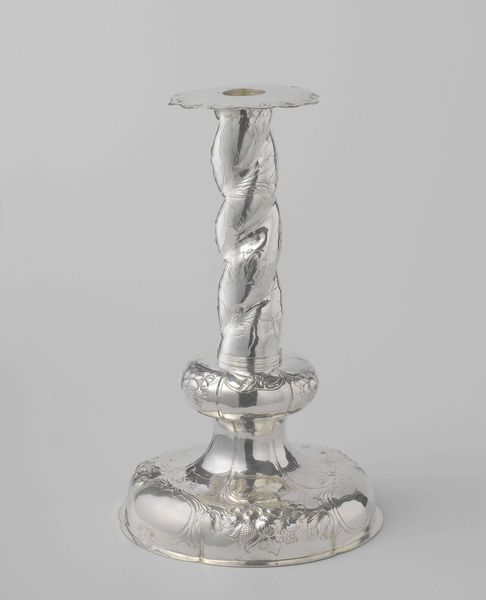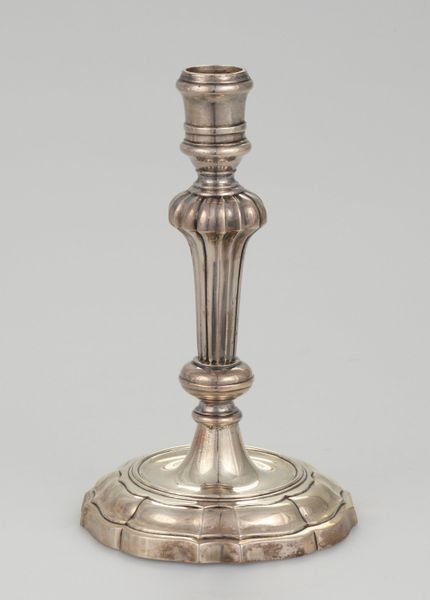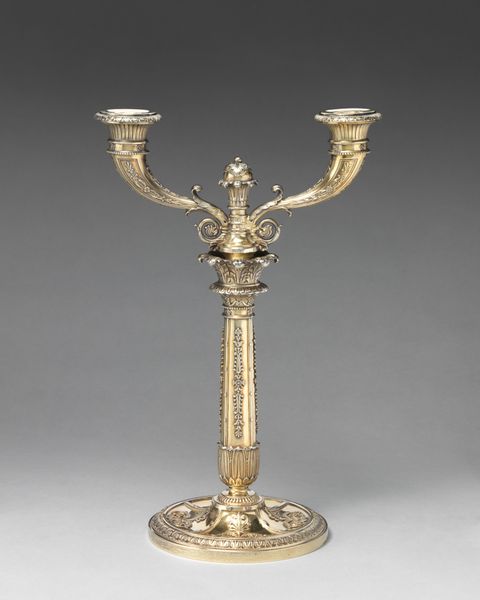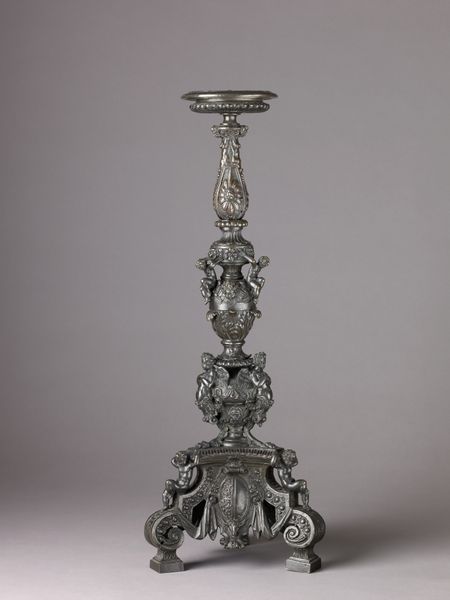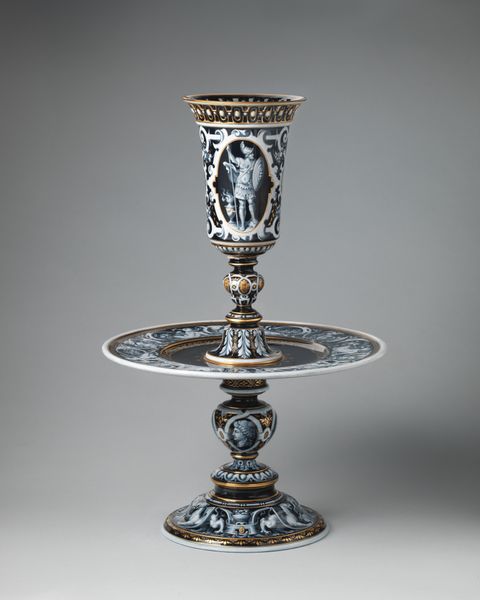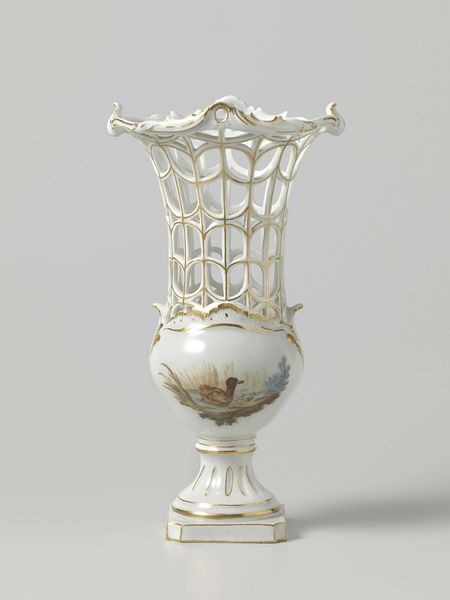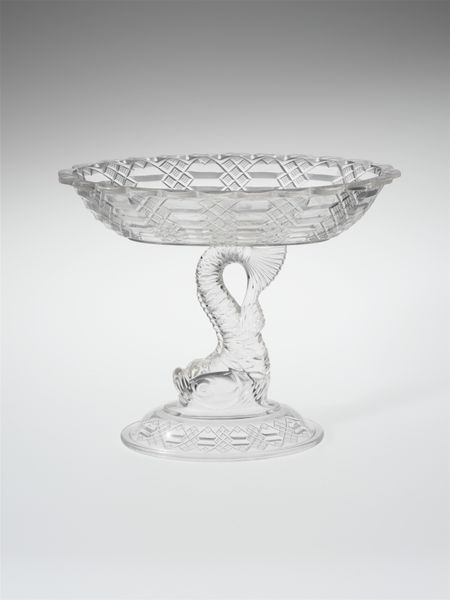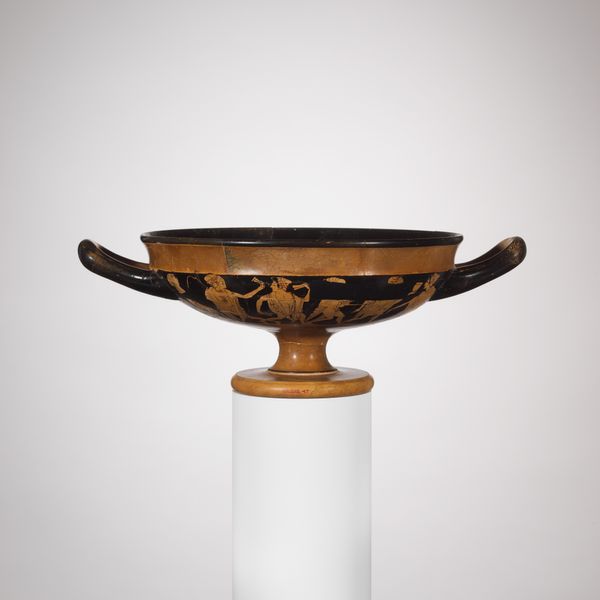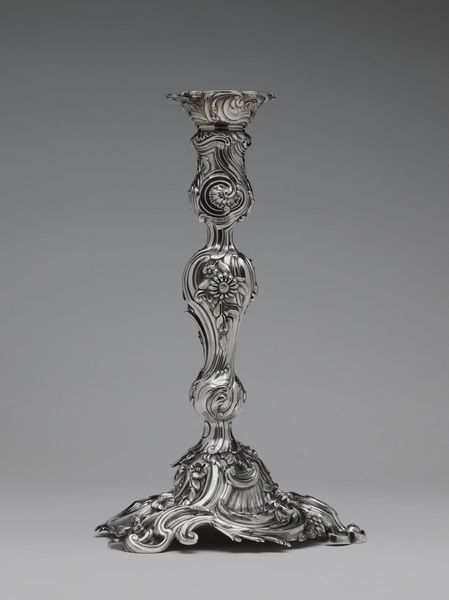
carving, metal, gold, bronze, glass, sculpture
#
neoclacissism
#
carving
#
metal
#
gold
#
bronze
#
sculptural image
#
glass
#
sculpture
#
decorative-art
Dimensions: H. 61 cm (24 in.)
Copyright: Public Domain
Editor: This is the "Epergne," made around 1810 to 1820 by Jean-Baptiste-Claude Odiot. It's a gleaming sculpture using gold, bronze, and glass, with little figures supporting the bowls. What stands out to me is the way it merges classical figures with this sense of aristocratic opulence. What do you make of it? Curator: It's fascinating how Odiot blends the neoclassical with a taste for the decadent. Consider those putti: they’re straight out of classical iconography, referencing innocence and abundance, but here they're literally holding up vessels intended for lavish display. Does that contrast suggest anything about the society that would commission such a piece? Editor: Hmm, I suppose it reveals a culture embracing classical ideals but also indulging in luxury and maybe excess? Curator: Precisely. And observe the choice of materials: gold and bronze, suggesting permanence and value, combined with fragile glass. Doesn't that combination evoke both power and vulnerability? This object reflects a particular moment in European history, a fascination with empire and a desire to hold onto beauty, even as empires rise and fall. What emotional residue do you feel it carries? Editor: It feels both aspirational and maybe a little burdened – carrying all that weight, those layers of meaning. It’s beautiful but also kind of tense. Curator: I think you've captured it perfectly. It's a relic of a specific time, yet it continues to provoke questions about value, beauty, and the weight of history. Editor: This has given me a lot to think about! I never considered the emotional baggage an object like this could hold.
Comments
No comments
Be the first to comment and join the conversation on the ultimate creative platform.
